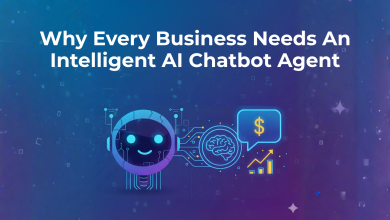AI is one of the fastest-adopted technological breakthroughs in human history. Unsurprisingly, it has quickly become common in the workplace. Rapid adoption means employees will enthusiastically use tools like large language models to boost productivity. However, a lack of understanding can introduce security, compliance, and ethical issues down the line.
This article provides a concise overview of the fundamentals of LLMs that employees should be familiar with before using them in a professional context. It covers fundamental operating principles and use cases as well as LLMs’ shortcomings and how to address related security concerns.
What are LLMs?
Large Language Models or LLMs are a type of AI system created to understand and generate language that makes logical sense to humans. LLMs are based on deep learning, especially transformers. They’re part of the broader field of Natural Language Processing (NLP), which employs various techniques to let computers understand and reproduce human language.
The word “large” in the name has two meanings. On the one hand, it points to the vast scope of data needed to train such models. On the other hand, large also refers to the billions of parameters LLMs use to generate output accurately.
How do LLMs work?
At their core, LLMs are sophisticated prediction algorithms. They take user inputs, process them, and output sequences of words that have the highest likelihood of being correct based on the data it is trained on.
Early LLMs were based on Recurrent Neural Networks (RNNs). These approached texts one word at a time. The resulting outputs were slow and inaccurate because the models couldn’t maintain contextual connections between words that weren’t close to each other.
This changed with the introduction of transformers. They are the core deep learning architecture responsible for the exponential rise and development of LLMs. Rather than go word by word, they can analyze sentences or even entire texts at once and establish the relationships between a word and all others in the sequence.
An LLM’s output depends on the parameters established during training. They govern everything from the importance of each word relative to others to how the LLM understands a word. Think of parameters as billions of dials whose intensity gets adjusted as the LLM processes its training data.
While modern LLMs convincingly mimic human intelligence, they aren’t aware and don’t possess the ability to reason or discern the truth. Their outputs result from probability-based pattern matching, not comprehension.
What Are LLMs Useful For?
LLMs have quickly found countless uses in business settings. They’ve become indispensable for handling low-level and rote tasks that take up time employees could use to focus on strategy development, problem-solving, and other tasks requiring human ingenuity. Here are a few popular examples:
- Summarizing – LLMs provide summaries of long or complex texts that focus on key points and make the contents more approachable.
- Content creation – Marketing teams have come to rely on LLMs when brainstorming content like blog articles and social media posts. They’re also great for creating engaging product descriptions.
- Translation – LLMs now provide nearly instant and serviceable translations for most of the world’s major languages.
- Sentiment analysis – Being able to identify the emotions expressed in a text is indispensable, whether you’re a customer support agent trying to prioritize queries or the marketing director planning the next campaign based on current brand perception.
- Writing and debugging code – Programmers are increasingly using LLMs to generate snippets of common code. LLMs also excel at spotting errors and suggesting correct alternatives.
- Chatbots – Useful for basic customer interactions like answering FAQs or helping with low-level troubleshooting.
All these use cases and more are a real boon for productivity and creativity. Even so, a human should review the interactions and results to eliminate any errors or biases.
How to Address LLM-Related Security Risks?
LLMs have become too useful for employees to ignore. Companies can respond in one of two ways. Either acknowledge their use and vet the best and most secure LLMs or face the problems that will inevitably arise when employees use them as shadow IT. However, even sanctioned LLMs come with security risks.
Access control is at the top of the list. LLMs and other AI tools may need access to your internal databases and the sensitive data within. Employees who set up weak credentials for the LLMs they use or mishandle their storage may unintentionally cause data breaches or compliance violations.
It’s also crucial to use a business-grade VPN software to protect connections involving AI-related systems and resources. With encryption safeguarding sensitive LLM interactions — particularly when employees access these systems remotely or through external networks — you can significantly reduce the risk of interception or data breaches involving the organization’s sensitive information.
Have an enterprise-level password manager handle all LLM-related access controls. It can store sensitive information like associated API keys and tokens in an encrypted vault while also generating unique and complex passwords. Moreover, the manager simplifies role-based access control and can log AI-related employee access activities to help ensure compliance.
IT teams that manage company-wide risks will also want to consider the benefits of threat intelligence tools for safeguarding budding AI initiatives within the company. These tools enable the responsible use of LLMs by monitoring the web for exposed access credentials, data leaks, and impersonation attempts that may target your company before they put their plans into action. You can check best data removal service to learn more about threat intelligence tools and there features.
What Are The Limitations and Ethical Challenges?
While LLMs are becoming integral to our workflows, their limitations and inherent problems should always be a consideration.
The point made above is worth reiterating; LLMs neither reason nor understand whether something is correct or not. If you train an LLM with a text where grass is always associated with the color purple, it will claim that grass is purple when prompted. Even if you correct a piece of information during an interaction, it won’t permanently affect or alter the LLM’s memory.
This is problematic on several levels.
First, much of the data LLMs like ChatGPT are trained on comes from scraping the internet. LLMs have no means of fact-checking, and the training data’s origin means it contains many confidently wrong answers. Programmers are also averse to having their LLMs admit ignorance, which is seen as less helpful. Unsurprisingly, this leads to situations where LLMs will hallucinate incorrect, even harmful responses.
Training data can be thorough and consistent, yet still cause problems due to inherent biases. It’s easy and common for LLMs to fall into the trap of promoting stereotypes or discrimination. It’s also trivial to prompt an LLM to create content that spreads misinformation.





